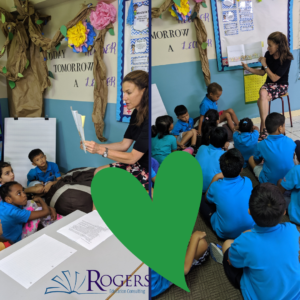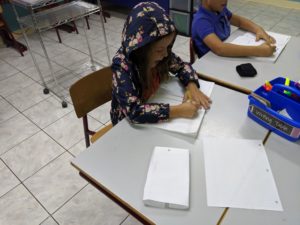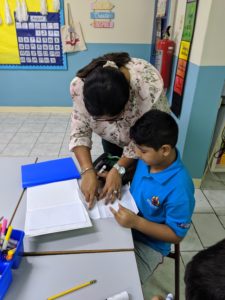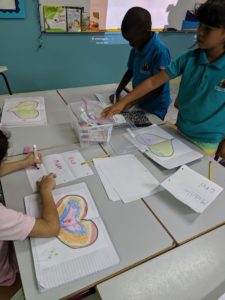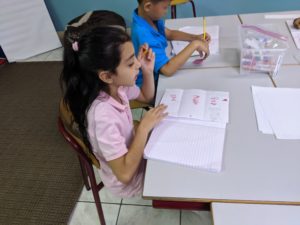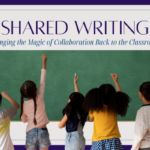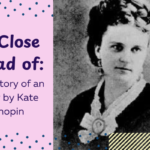We are getting Writers’ Workshop kicked off school-wide – K-12!
In the previous blog post, I shared how I used Heart Maps to get students to generate ideas for writing stories in a Writers’ Workshop. The following day, I returned to the classroom to help the students turn one of their ideas into their first narrative! You can never predict how a lesson will go, but this one went so much better than I expected!
We began this lesson by gathering on the floor and the students listened to Roller Coaster by Marla Frazee. This is a great, and widely used, mentor text for modeling the importance of a small moment. After reading the story, I explained to the students that the writer chose just to write about the girl’s experience on one roller coaster. She didn’t write about the other roller coasters or any food she ate while at the amusement park, or any other part of the fair. She just wrote about one small moment and all the feels that occurred on one ride at the park.
When we had finished reading, I projected my heart map again and explained how, if I chose to write about Jack’s trip to New York, I wouldn’t write about the whole trip, but I would choose a small moment. I would choose the time we climbed to the top of the Statue of Liberty. If I wrote about skiing with Anna, I would write about the small moment when Cody fell in the snow and couldn’t get up. Then I explained that the small moment I most wanted to share was about Cole trying to catch fish at the beach.
To prepare us for storytelling, we all took a piece of paper and folded it into thirds. We wrote beginning, middle, and end in each row. As I began telling my story, I touched the beginning section. I told my whole story out loud to the students, next pointing to middle and finally end as I wrapped it up. I repeated my story twice, touching each section as I told it, and allowed the students to judge whether or not they thought my story really was a small moment.
Then it was the students’ turn. Each one chose a topic from their own heart map and I asked them to think about whether it was a small moment or not, and if it was, what the beginning, middle, and end of the story would be. They could share with people at their table, but most importantly I walked around and met with the students individually. One would say, “I want to write about my cat.” My response was, “Great! I bet your cat is important to you! What is a small moment you have with your cat?” I would work with them until they had narrowed their broad topic down to a small moment that had a beginning, middle, and end. The students then told their story to their partner, just like I had modeled.
Of course, the students ended the writing day by writing out their small moment! I have to tell you, they were pretty amazing! The best part was that the kids were excited to write more!
